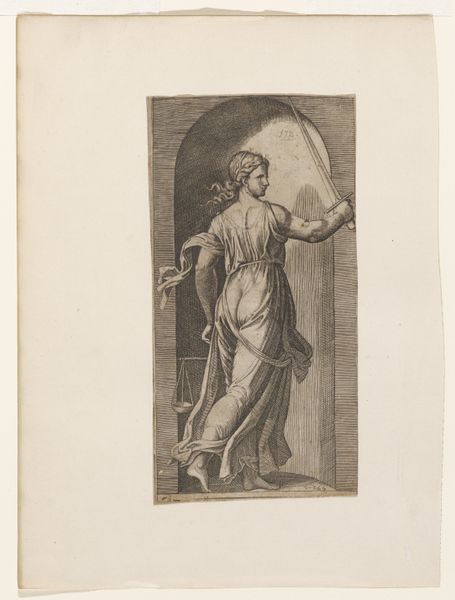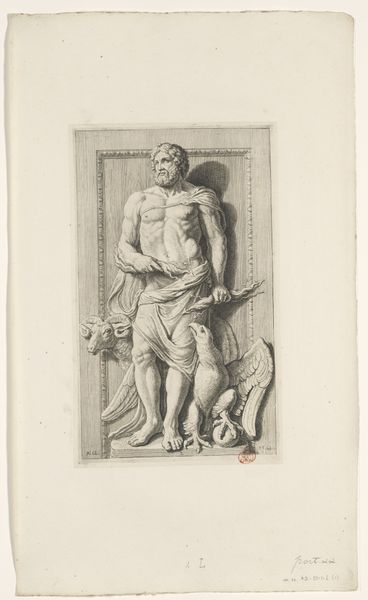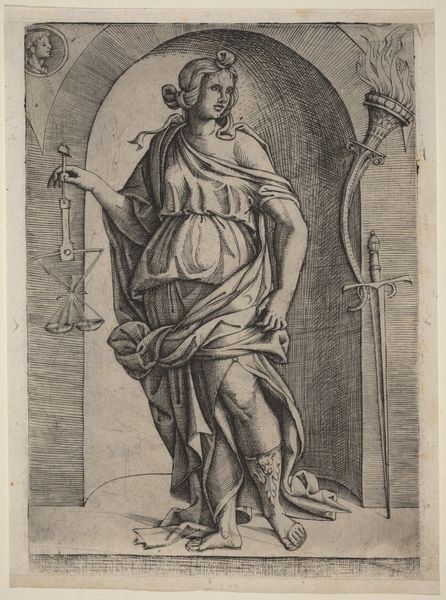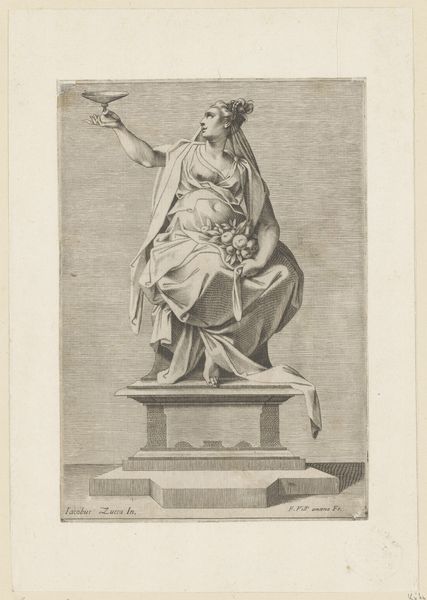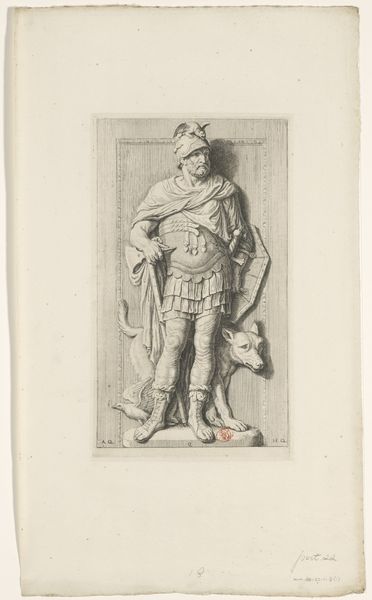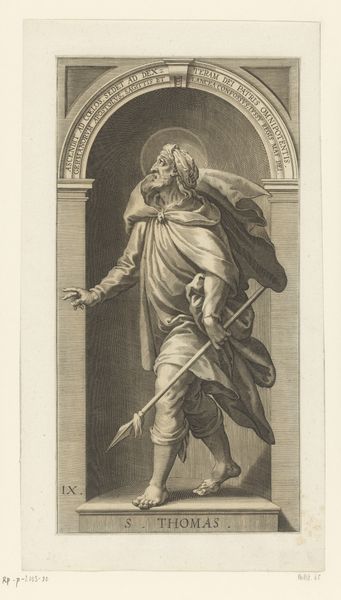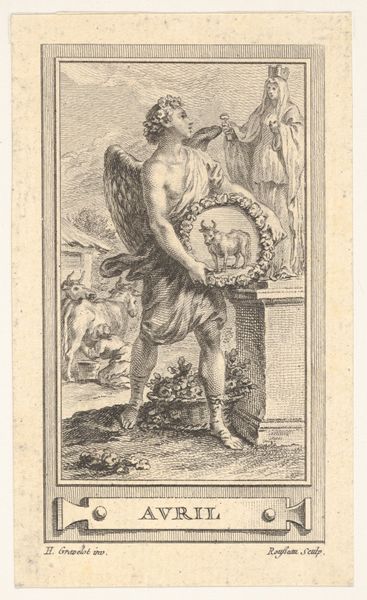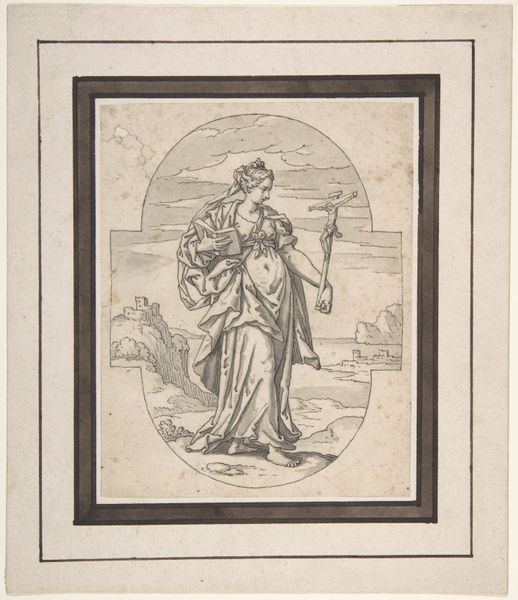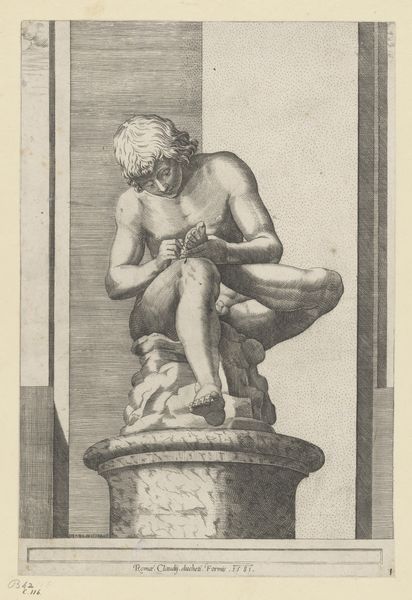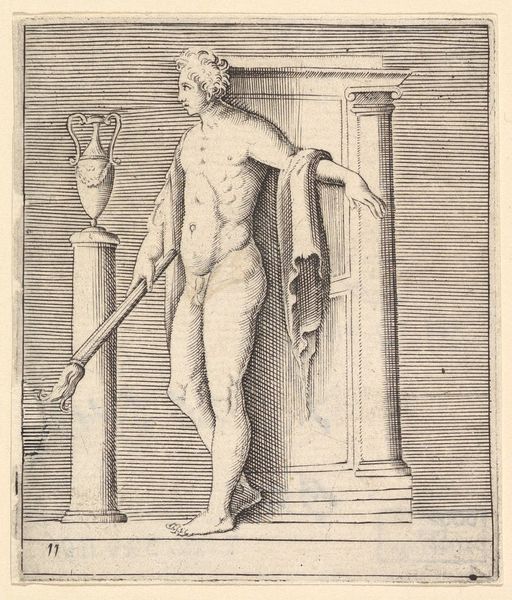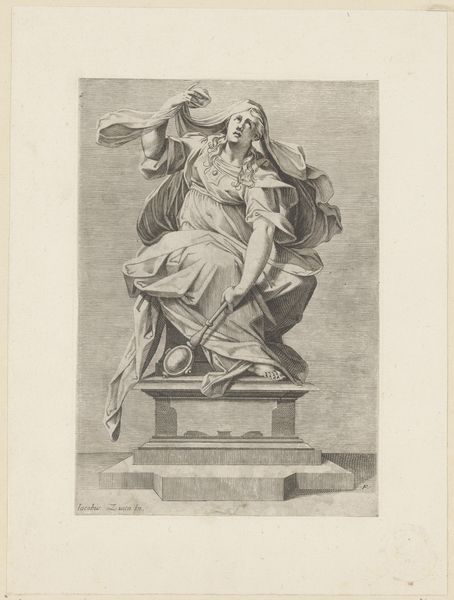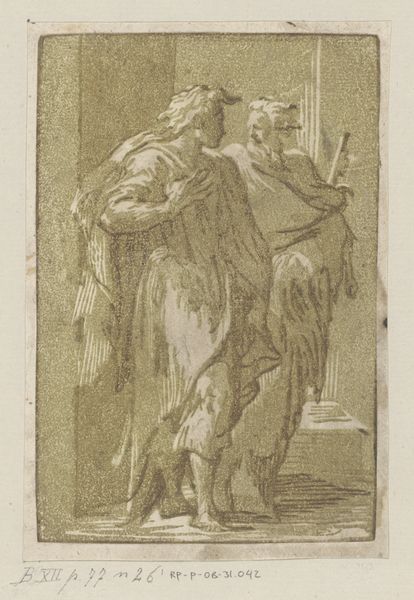
Beeld van Diana in de oostelijke galerij van het Stadhuis op de Dam 1655
0:00
0:00
print, sculpture, engraving
#
baroque
# print
#
old engraving style
#
sculpture
#
history-painting
#
nude
#
engraving
Dimensions: height 329 mm, width 174 mm
Copyright: Rijks Museum: Open Domain
Editor: This is a print from 1655 by Hubert Quellinus, titled "Beeld van Diana in de oostelijke galerij van het Stadhuis op de Dam." It depicts a sculpture of Diana, goddess of the hunt. I’m struck by how this print makes a civic monument, in what seems like an opulent city hall, accessible as a more portable and reproducible image. How should we read this representation in its socio-historical context? Curator: That's a great starting point! Consider the role of the Stadhuis, now the Royal Palace, as a symbol of Amsterdam's power during the Dutch Golden Age. Reproducing this statue of Diana as a print amplifies the intended political message. What statement was the city trying to make with this particular statue, and what happens to that statement through its reproduction and distribution as a print? Editor: So, beyond simple aesthetic enjoyment, this print might have been intended to promote the values the city associated with itself? Maybe order, prosperity, and a connection with a classical past? Curator: Precisely! Think about who was commissioning and consuming such imagery. Wealthy merchants and civic leaders sought to legitimize their status by associating themselves and their city with classical virtues and ideals, and circulate those ideas widely. What does the choice of Diana herself tell us about the values Amsterdam was keen to project? Editor: Right. Diana represents independence, skill in hunting and, crucially, she is a virgin, representing chastity, so maybe an attempt to portray the city as virtuous and morally upright? Especially to outsiders, who may see it as a hub of trade? Curator: Excellent observation. These prints functioned as visual propaganda, shaping public perception of Amsterdam, both domestically and internationally. In fact, consider what power rests in deciding which images should represent you and your city. Editor: This helps me understand the layers of meaning embedded within what seemed like a straightforward representation. Thank you! Curator: And it illustrates the potent and complex relationship between art, power, and public image. The conversation isn’t over though!
Comments
No comments
Be the first to comment and join the conversation on the ultimate creative platform.
